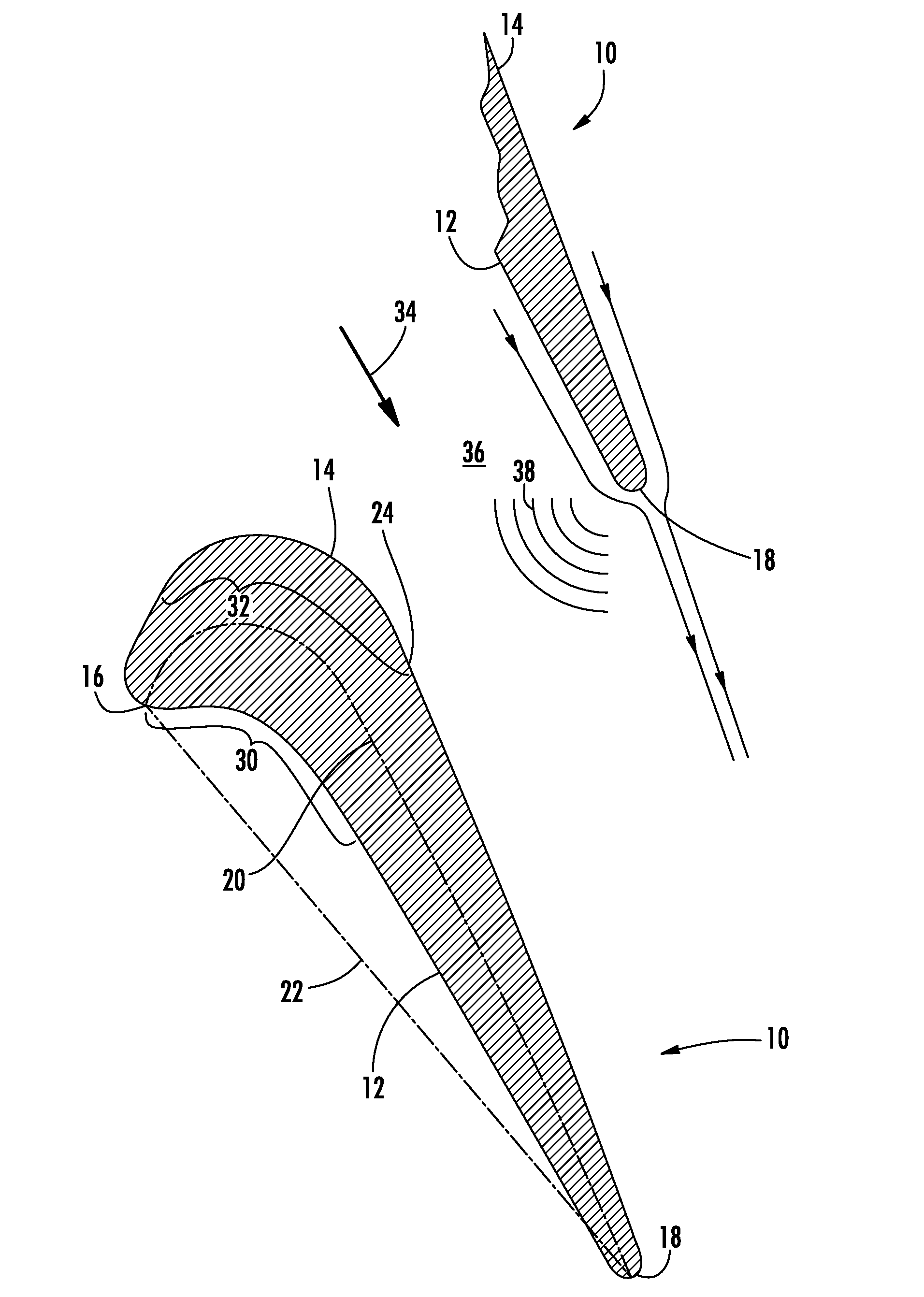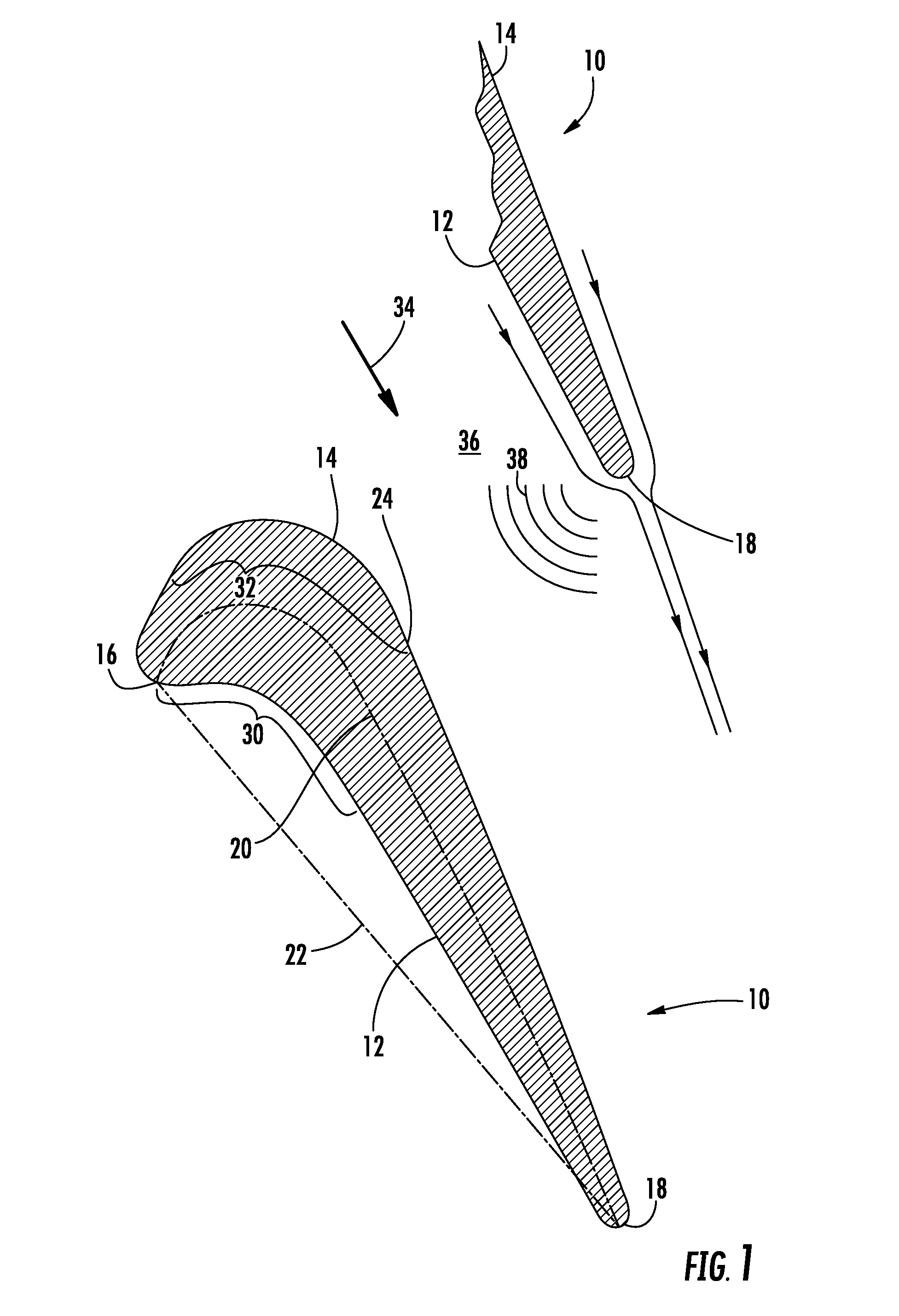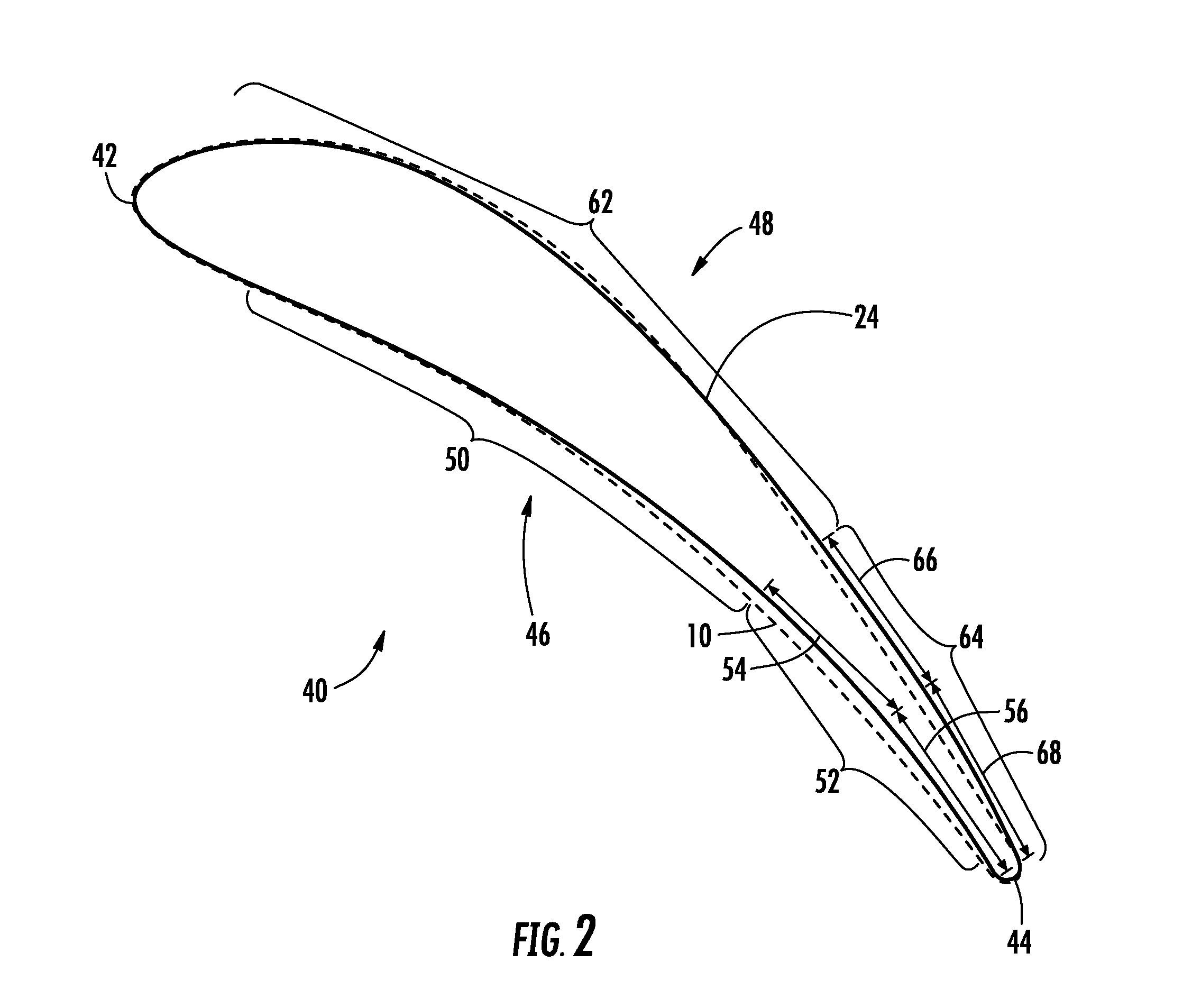Airfoil
- Summary
- Abstract
- Description
- Claims
- Application Information
AI Technical Summary
Benefits of technology
Problems solved by technology
Method used
Image
Examples
first embodiment
[0021]FIG. 2 provides a radial cross-section view an airfoil 40 according to the present invention, with the outline of the exemplary airfoil 10 shown in dashed lines for comparison. As shown in FIG. 2, the airfoil 40 includes a leading edge 42 and a trailing edge 44 downstream from the leading edge 42. A pressure surface 46 is opposed to a suction surface 48 between the leading and trailing edges 42, 44. FIG. 3 provides an exemplary graph of the curvature of the airfoil 40 shown in FIG. 2, with the curvature of the airfoil 10 shown in FIG. 1 shown in dashed lines. The horizontal axis in FIG. 3 represents the chord length between the leading edge 42 and the trailing edge 44, and the vertical axis represents the amount of curvature in the pressure and suction surfaces 46, 48. By convention, the area above the horizontal axis represents convex curvature, and the area below the horizontal axis represents concave curvature.
[0022]As shown in FIG. 2, the pressure surface 46 includes a fir...
second embodiment
[0024]FIG. 4 provides a radial cross-section view the airfoil 40 according to the present invention, and FIG. 5 provides an exemplary graph of the curvature of the airfoil 40 shown in FIG. 3. The airfoil 40 generally includes the same contours for the pressure and suction surfaces 46, 48 as previously described with respect to FIGS. 2 and 3. In addition, the suction surface 48 includes an intermediate section 70 between the first convex section 62 and the second convex section 64. The intermediate section 70 may commence near a throat 72 on the suction surface 48 and extend downstream toward the second convex section 64 with a curvature of zero.
[0025]One of ordinary skill in the art will readily appreciate from the teachings herein that the magnitude and / or length of the particular concave, convex, and intermediate sections will vary according to particular embodiments and placement in the turbine, and the present invention is not limited to any specific magnitudes or lengths unless...
PUM
 Login to View More
Login to View More Abstract
Description
Claims
Application Information
 Login to View More
Login to View More - R&D
- Intellectual Property
- Life Sciences
- Materials
- Tech Scout
- Unparalleled Data Quality
- Higher Quality Content
- 60% Fewer Hallucinations
Browse by: Latest US Patents, China's latest patents, Technical Efficacy Thesaurus, Application Domain, Technology Topic, Popular Technical Reports.
© 2025 PatSnap. All rights reserved.Legal|Privacy policy|Modern Slavery Act Transparency Statement|Sitemap|About US| Contact US: help@patsnap.com



